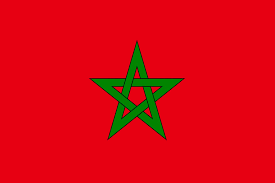Language/Moroccan-arabic/Grammar/How-to-Use-Have
Hi Moroccan Arabic learners! 😊
In this lesson, we are going to learn how to use "have" in Moroccan Arabic. "Have" can be translated into "كينعني" (kayna'ni) or "عندي" (andi), and it's an important verb to know to talk about possession or to form the present perfect tense.
Consider exploring these related pages after completing this lesson: How to use “there to be” in Moroccan Arabic & Formation of Passive Constructions.
"Have" as a Possessive Verb[edit | edit source]
In Moroccan Arabic, "have" is often used as a possessive verb. There are two forms:
- كينعني (kayna'ni)
- عندي (andi)
Both forms mean "to have" and can be used interchangeably in different situations. They are mostly used to talk about things you own or possess.
Here are some examples of how to use "have" in Moroccan Arabic:
| Moroccan Arabic | Pronunciation | English |
|---|---|---|
| كاينعني سيارة | kayna'ni syara | I have a car |
| عندي شقة في الدار البيضاء | andi shqat fiddar lbida | I have an apartment in Casablanca |
| كاينعني مكتب ديالي | kayna'ni maktab dyali | I have my office |
Notice that the word order is different in Moroccan Arabic than in English. In English, we say "I have a car," but in Moroccan Arabic, we say "kayna'ni syara" (have-I car).
Let's practice with a dialogue:
- Person 1: عندك شي طيور؟ (andi shi tyur?) (Do you have any birds?)
- Person 2: كاينعني حوت ديال طيور || kayna'ni hwat dyal tyur || I have a flock of birds
Notice that Person 2 used "kayna'ni", and not "andi", to talk about possession of birds. In this case, both forms are correct, but "kayna'ni" is more commonly used for talking about a group of things.
"Have" to Form the Present Perfect Tense[edit | edit source]
In Moroccan Arabic, we use "have" to form the present perfect tense. The present perfect is used to talk about actions that happened in the past but are still relevant or have an impact on the present.
To form the present perfect tense in Moroccan Arabic, we use the following structure:
- Subject + verb "kayna'ni" or "3endy" + past participle
Here are some examples of how to use "have" to form the present perfect tense in Moroccan Arabic:
| Moroccan Arabic | Pronunciation | English |
|---|---|---|
| كاينعني شريت التذكرة | kayna'ni shrit attazkira | I have bought the ticket |
| عندي درت الواجب ديالي | andi drt elwajib dyali | I have done my homework |
| كاينعني فطرت سمك ديال البحر | kayna'ni ftart smak dyal lb7ar | I have eaten sea fish |
Notice that the main verb is in the past participle form. In Moroccan Arabic, past participles are formed by adding "-ي" (-i) to the end of a verb's infinitive form.
Let's practice with a dialogue:
- Person 1: واش غادي تدوز الامتحان؟ (wash ghadi tdwz l'emt7an?) (Are you going to pass the exam?)
- Person 2: كاينعني درت كلشي ديال اللي كان غير باغي يخليني نتفوق || kayna'ni drt klshi dyal lli kan ghir baghi ykhlini ntfawwq || I have done everything I could to excel
Conclusion[edit | edit source]
"Have" is an important verb in Moroccan Arabic to talk about possession and to form the present perfect tense. To improve your Moroccan Arabic Grammar, you can also use the Polyglot Club website. Find native speakers and ask them any questions!
➡ If you have any questions, please ask them in the comments section below.
➡ Feel free to edit this wiki page if you think it can be improved. 😎
Excellent job on conquering this lesson! Consider delving into these related pages: The verb "To Come" & The verb to Get up.
Other Lessons[edit | edit source]
- Possessive Case in Moroccan Arabic
- The Ablative Case in Moroccan Arabic
- Plurals
- The Dative Case in Moroccan Arabic
- The Genitive Case in Moroccan Arabic
- The verb "To want"
- Verbs
- The verb "to sleep"
- Alphabet and Pronunciation in Moroccan Arabic
- How to Use Be

